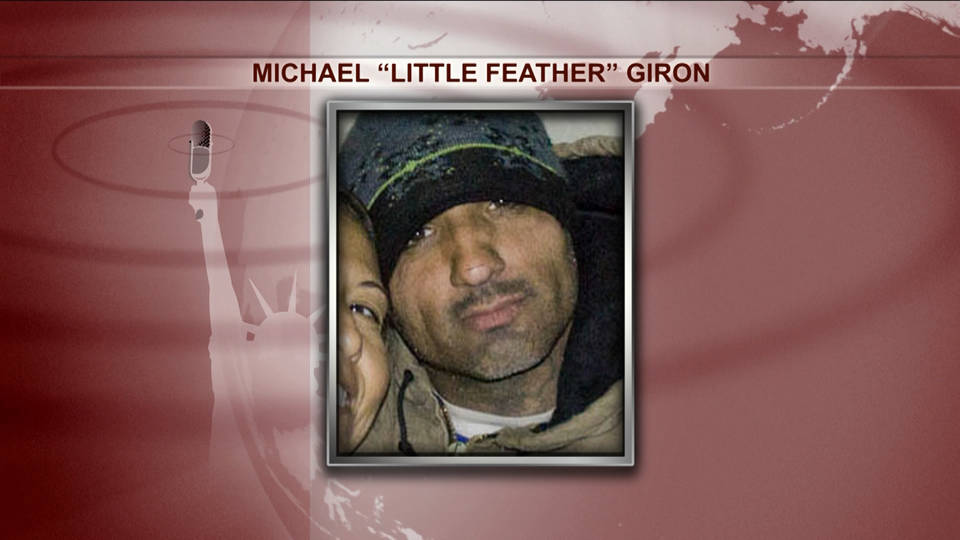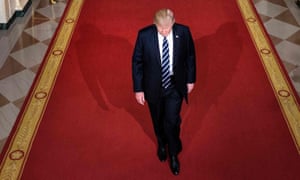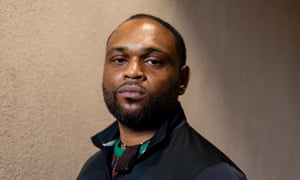
"We all know that timing matters. But most of our decisions on this front are intuitive and haphazard. Timing, we believe, is an art.
In fact, timing is really a science. For several decades, researchers in dozens of fields—from economics to anesthesiology to social psychology—have been unearthing the hidden science of timing. In randomized controlled experiments, field studies and the analysis of massive data sets, they are exploring questions that span the human experience. How do beginnings, midpoints and endings alter our actions and memories? How do groups synchronize in time? How do even the verb tenses we use affect our behavior? Time, they have discovered, shapes our productivity, health and well-being in powerful but often invisible ways.
Much of what we consider “natural” units of time—seconds, hours, weeks—are really fences that our ancestors constructed to corral time. But one unit remains beyond our control: We inhabit a planet that turns on its axis at a steady speed in a regular pattern, exposing us to consistent periods of light and dark. The day is perhaps the most important way that we divide, configure and evaluate our time. By understanding the science of the day—and by giving more attention to the question of “when”—we can improve the effectiveness and success of our resolutions.
So how can we harness time to be healthier, happier and more productive?
Resolution: Get a promotion, get a raise or otherwise do well at work. Each year, many of us vow to get more done at work and perhaps even make a few creative breakthroughs. Yet many of us don’t realize how much the time of day matters to our performance.
Scientists began measuring the effect of the time of day on human brain power more than a century ago, when the pioneering German psychologist Hermann Ebbinghaus conducted experiments showing that people learned and remembered strings of nonsense syllables more effectively in the morning than at night. Since then, researchers have continued that investigation for a range of mental pursuits. They’ve drawn three big conclusions.
First, our cognitive abilities don’t remain static over the course of a day. During the 16 or so hours we’re awake, they change—often in a regular, foreseeable manner. We are smarter, faster and more creative in some parts of the day than others.
Second, these daily fluctuations can be extreme. “The performance change between the daily high point and the daily low point can be equivalent to the effect on performance of drinking the legal limit of alcohol,” write Russell Foster, a neuroscientist and chronobiologist at the University of Oxford, and Leon Kreitzman in their book “Rhythms of Life.” Other research has shown that time-of-day effects can explain 20% of the variance in human performance on cognitive undertakings.
Third, how we do depends on what we’re doing. We’re more effective at some tasks early in the day and at other tasks later in the day.
For most of us, sharp-minded analytic capacities crest in the late morning.
From big-data analyses of 500 million tweets to studies led by Nobel Prize-winning scientists, research has shown that we generally experience the day in three acts: a peak, a trough and a rebound. Most of us experience the pattern in that order. But the roughly one in five of us who have evening “chronotypes”—people who are night owls—tend to proceed in reverse order. (To determine whether you’re an owl, consider a day when you don’t have to awaken to an alarm clock. What is the midpoint between the time you go to sleep and the time you wake up? If it’s 5:30 a.m. or later, you’re probably an owl.)
During the peak, our ability to focus is at its best. When we wake up, our body temperature slowly rises. That rising temperature gradually boosts our energy level and alertness—and that, in turn, enhances our executive functioning, our ability to concentrate and our powers of deduction. For most of us, these sharp-minded analytic capacities crest in the late morning or around noon. This is when we are most vigilant, when we can keep distractions from penetrating our cerebral gates. That makes the peak the best time to tackle work that requires heads-down attention and analysis, such as writing a legal brief or auditing financial statements.
Vigilance, though, has its limits. Alertness and energy levels tend to plummet during the afternoons. And with that drop comes a corresponding fall in our ability to remain focused and constrain our inhibitions. This is the second stage: The trough, which usually occurs in the early to midafternoon.
‘The afternoon trough is the Bermuda Triangle of our days.’
The effects of the trough can be significant. In a 2016 study, Harvard University’s Francesca Gino and two Danish researchers examined four years of standardized test results for two million students in Denmark and matched scores to the time of day the students took the test. They found that students randomly assigned to take the tests in the afternoon scored considerably lower than those who took the test in the morning—an effect equivalent to missing two weeks of school.
The trough is an especially dangerous time for health-care professionals and their patients. In a study published in 2006 in Quality and Safety in Health Care, researchers at Duke Medical Center reviewed about 90,000 surgeries at the hospital and found that harmful anesthesia errors were three times more likely in procedures that began at 3 p.m. than at 8 a.m.
The afternoon trough is the Bermuda Triangle of our days—the place where effectiveness and good intentions disappear. This is the time to do your mindless administrative work, such as answering email, filing papers and filling out expense reports.
The third stage is the rebound, which for most of us occurs in the late afternoon and early evening. During this stage, we tend to excel at a different type of work. In 2011, two American psychologists, Mareike Weith and Rose Zacks, posed what are called “insight problems”—which require creative, rather than algorithmic, thinking and have nonobvious, surprising solutions—to 428 people, about half of whom were vigilant morning thinkers. These participants fared better on these problems not during their supposedly more optimal mornings but much later in the day—a phenomenon the researchers dubbed “the inspiration paradox.”
In the late afternoons and early evenings, most people are somewhat less vigilant than during the peak, but more alert and in a better mood than during the trough. That combination has advantages. A boosted mood leads to greater openness. A slight reduction in vigilance lets in a few distractions—but those distractions can help us spot connections that we might have missed when our filters were tighter. So we should move brainstorming sessions and other creative pursuits to the rebound stage. (Again, because night owls move through the day in the reverse order, their rebound period is the morning.)
The key is to seek what psychologists call the “synchrony effect”—to bring your own daily rhythms, your task (is it analytical, administrative or insight?) and your time (is it early, midday or later?) into alignment. Doing your analytic work during the rebound or your creative work during the trough is an ideal way to sabotage your resolutions.
Resolution: Get more exercise. It’s the most common New Year’s resolution. But when is the best time to hit the gym? Science has some answers, and most of them depend on the nature of our exercise goals.
Morning exercise may burn 20% more fat than later, post-food workouts. iStock
Schedule exercise in the morning if you want to:
Lose weight. When we first wake up, having not eaten for at least eight hours, our blood sugar is low. Since we need blood sugar to fuel a run, morning exercise will use the fat stored in our tissues to supply the energy we need. (When we exercise after eating, we use the energy from the food we’ve just consumed.) In many cases, morning exercise may burn 20% more fat than later, post-food workouts.
Boost mood. Cardio workouts—swimming, running, even walking the dog—can elevate mood. When we exercise in the morning, we enjoy these effects all day. If you wait to exercise until the evening, you’ll end up sleeping through some of the good feelings.
Keep a routine. Some studies suggest that we’re more likely to adhere to our workout routine when we do it in the morning. So if you find yourself struggling to stick with a plan, morning exercise, especially if you enlist a regular partner, can help you form a habit.
Exercise in the late afternoon or evening if you want to:
Avoid injury. Studies have found that injuries are less common in workouts later in the day. Our body temperature reaches its high point in the late afternoon and early evening, and when our muscles are warm, they’re more elastic and less prone to injury.
Perform your best. In a 2015 study of 121 athletes, Elise Facer-Childs and Ronald Brandstaetter of the University of Birmingham found that individual performance can vary by as much as 26% based solely on time of day—and that performance typically peaks between 10 and 12 hours after awakening. So working out in the afternoons can help you sprint faster and lift more. Lung function is highest this time of the day, so your circulation system can distribute more oxygen and nutrients. This is also the time of day when strength peaks, reaction time quickens, hand-eye coordination sharpens, and heart rate and blood pressure drop. In fact, a disproportionate number of athletic records, especially in speed events, are set in the late afternoon and early evening.
Enjoy the workout a bit more. People typically perceive that they’re exerting themselves a little less in the afternoon even if they’re doing exactly the same exercise routine as in the morning, according to the American Council on Exercise.
Resolution: Be happier and more productive. Ultimately, many of our New Year’s resolutions seek a broader sense of well-being. One powerful way to recast your daily routine is to take more breaks. Short breaks can help us to maintain focus and reactivate our commitment to a goal. And certain kinds of breaks are better than others.
Remember those Danish schoolchildren whose test scores sagged in the afternoon? When those students had a 20- to 30-minute break to eat, play and chat before the test, they actually scored higher than the morning test takers.
What’s the smartest approach to taking breaks? Frequent short breaks are more effective than occasional ones. The ideal break also involves movement. A 2016 study published in the International Journal of Behavioral Nutrition and Physical Activity showed that hourly five-minute walking breaks boosted energy levels, sharpened focus and “improved mood throughout the day and reduced feelings of fatigue in the late afternoon.” These “microbursts of activity,” as the researchers called them, were also more valuable than a single 30-minute walking break. And regular short walking breaks increase motivation and concentration and enhance creativity, according to researchers at Stanford University.
Time alone can be replenishing, but research has found even more powerful effects when a break is spent with others. In high-stress occupations, such as nursing, social and collective rest breaks have been found to minimize physical strain, cut down on medical errors and even reduce staff turnover. Likewise, research in South Korean workplaces suggests that social breaks—talking with co-workers about something other than work—are the most useful in reducing stress and improving mood.
Walks in nature provide a boost in happiness.
Nature breaks may replenish us the most. A 2011 study found that people who took a short walk outdoors returned feeling happier and more rested than people who walked indoors. What’s more, while people predicted they’d be happier being outside, they underestimated how much happier.
Finally, aim for full detachment. When we take a break, we often try to combine it with another cognitively demanding activity—checking our emails or talking to a colleague about a project deadline. That’s a mistake. Fully detached breaks have been found to ease stress and boost mood in a way that multitasking breaks do not. Another study from South Korea found that tech-free breaks increased vigor and reduced emotional exhaustion at work.
Perhaps the wisest thing you can do in the year ahead—after you’ve rearranged your work schedule to take advantage of the hidden pattern of the day and used your fitness goals to figure out your ideal exercise time—is to make a daily break list. Each day, alongside your columns of tasks to complete, meetings to attend and deadlines to hit, list the breaks you’re going to take. Then give it the same attention and reverence you devote to your to-do list. If one lesson rings out from the science of timing, it’s this: In 2018, we should give ourselves a break."
How to Be Healthier, Happier and More Productive: It’s All in the Timing - WSJ



















